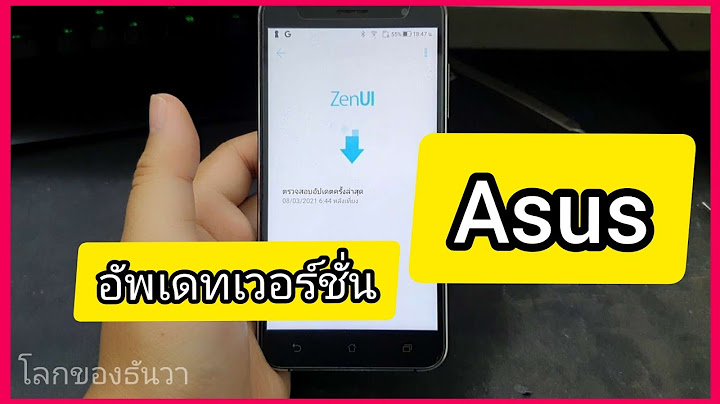Show ฮัลโหลวันนี้ตื่นเต้นมากๆๆๆ เพราะออยไม่เคยรีวิวไอเทมตัวนี้มาก่อนเลย คือใช้เองมานานเป็นหลายปี ใช้หมดไปไม่รู้กี่10 ขวดแล้วจ่ะคุณ วันนี้ออยมารีวิวคลีนซิ่งที่ออยชอบมาก ใช้อยู่ตัวเดียวใช้หมด ซื้อซ้ำวนอยู้แบบนี้มาหลายปีแล้ว ไม่พอซื้อดองไว้ด้วย ใช้ดีบอกต่อทุกคนซื้อตามหมดเพราะว่าใช้ง่ายใช้ดีจริง คุ้มแบบ 10 10 10 ไปเลยแม่
 Makeup Remover ตัวนี้เป็นสูตรออยล์ หรือคลีนซิ่งออยล์นั้นเอง DERMACTION PLUS by Watsons Cleansing Oil Deep Clean คือตัวนี้เป้นคลีนซิ่งออยล์ที่ใช้ง่ายมากสามารถทำความสะอาดเครื่องสำอางได้แบบล้ำลึก และหมดจดมากเวอร์ แถมไม่ทำลายผิว และให้ผิวชุ่มชื้น ไม่ทิ้งความมันไว้บนใบหน้า ที่สำคัญไม่ทำให้หน้ามันเพิ่มขึ้น แบบที่สาวๆหลายคนกลัว ไม่กล้าใช้คลีนซิ่งออยล์เพราะกลัวหน้ามัน แต่ออยขอบอกเลย ใครยังไม่เคยลองคือพลาดมาก
 หน้าตาขวดคือเป็นแบบในรูปเลย ขวดใหญ่ปริมาณ 250 ML. ปกติ 1 ขวด ออยใช้ได้ประมาณ 3-4 เดือนเลย นี่ใช้เกือบทุกวันเลยเพราะต้องแต่งหน้าไปทำงานทุกวัน
 มาดูวิธีใช้ที่แสนจะง่าย และสะดวกที่สุดในสามโลก ชีวิตง่ายขึ้นเมื่อมีคลีนซิ่งขวดนี้ขวดเดียว ไม่ต้องใช้สำลีให้เปลืองเลยจ้า 555ออยชอบบีบคลีนซิ่งออยล์ ลงบนหน้าเลยจ้าเอาบีบให้ทั่วหน้า ให้ชุ่มไปเลย จากนั้นค่อยๆใช้มือนวดหน้า ถูๆวนๆ เครื่องสำอางละลายเร็วมาก ที่สำคัญเข้าตา เข้าปากไม่แสบนะจ่ะ ล้างมาสคาร่ากันน้ำได้แบบสบายรอบเดียวจบ ไม่ยุ่งยากใดๆออยชอบมากกกกกกที่สุดเลย
 ไม่จบแค่นี้ พอเราใช้มือค่อยๆนวดหน้าให้เครื่องสำอางละลายเสร็จแล้ว ง่ายกว่านั้นคือล้างออกด้วยน้ำเปล่าเลยจ้า เครื่องสำอางที่ละลายบนหน้าเราจะเปลี่ยนเป็นน้ำนมสีขาวขุ่น หายไปกับสายน้ำ เพียงเท่านี้ก็ล้างด้วยโฟมล้างหน้าหรือสบู่ล้างหน้าของเราได้ตามปกติ แค่นี้หน้าก็สะอาดปราศจากเครื่องสำอางในเวลาไม่ถึง 5 นาที

 เสร็จแล้ว ใช้เวลาน้อยมาก แถมง่าย สะดวก รวดเร็วสุดๆในการเอาเครื่องสำอางออกจากหน้าของเรา คลีนซิ่งออยล์ที่มีขายในท้องตลาดมีหลากหลายยี่ห้อจากที่ออยเห็นมา แต่ออยว่าคลีนซิ่งออยล์ของวัตสันตัวนี้คือราคาไม่แรง ขวดใหญ่ ใช้ได้นาน และคุณภาพของนังคือเริ่ดมากๆ ออยเลยอยากแนะนำเพื่อนๆ ใครอยากลดขั้นตอนการทำความสะอาดเครื่องสำอางต้องลองไปหาซื้อมาใช้กันเลยนะค่า ราคาดี มีโปรบ่อยมาก ราคาปกติประมาณ 380 กว่าบาท แต่วัตสันชอบมีโปรลดราคาน้องจะเหลือประมาณ 200 กว่า คือคุ้มแบบตาแตกเลยแม่
 จากที่บอกไปว่าคลีนซิ่งออยล์ตัวนี้ไม่ทำให้หน้ามัน และไม่ทิ้งความมันบนใบหน้า แถมล้างหน้าเสร็จหน้านุ่มนิ่ม ชุ่มชื้นมาก เหมาะสำหรับทุกสภาพผิวเลยนะจ้า เพราะเป็นออยล์จากสารสกัดธรรมชาติ ไม่มีน้ำหอมใดๆ ผิวแพ้ง่ายก็ใช้ได้ ไอเทมตัวนี้ลูกรักมากๆๆ วันนี้ต้องขอตัวไปก่อน ถ้ามีไอเทมตัวไหนโดนๆอีก ออยจะมาแนะนำเพื่อนๆอีกในกระทู้หน้านะจ้า ไปแล้วค่าบัยบาย????? ตัวเลือกการจัดส่ง ปทุมวัน/ Pathum Wan in กรุงเทพมหานคร/ Bangkok, 10110 เปลี่ยน แบบธรรมดา 1 - 2 วัน ฿40.00 สามารถเก็บเงินปลายทางได้ การคืนสินค้า และ การรับประกัน ส่งสินค้าคืนร้านค้าได้โดยตรงภายใน 7 วัน เหตุผลเปลี่ยนใจไม่สามารถใช้ได้ ไม่มีการรับประกันสินค้า  สิทธิพิเศษลูกค้าใหม่ลดสูงสุด 50% เฉพาะในแอปเท่านั้น สแกนผ่านโทรศัพท์มือถือ จัดจำหน่ายโดย Forcesales แชท คะแนนร้านค้า 99% จัดส่งตรงเวลา 100% อัตราการตอบแชท 100% ไปที่ร้านค้า
 A cleansing oil that removes the waterproof formula and dirt on the face deeply while maintaining moisture. Uploaded by: greasemonkey on 10/12/2020 Ingredients overviewHighlights#alcohol-free #fragrance & essentialoil-free Key IngredientsOther IngredientsSkim through
Dermaction plus by watsons Deep Clean Cleansing OilIngredients explainedAlso-called: Mineral Oil | What-it-does: emollient, solvent| Irritancy: 0 | Comedogenicity: 0-2 The famous or maybe rather infamous mineral oil. The clear oily liquid that is the "cheap by-product" of refining crude oil and the one that gets a lot of heat for its poor provenance. It is a very controversial ingredient with pros and cons and plenty of myths around it. So let us see them: The pros of mineral oil It is a great emollient and moisturizer working mainly by occlusivity. Occlusivity is one of the basic mechanisms of how moisturizers work and it means that mineral oil sits on top of the skin and hinders so-called trans-epidermal water loss, i.e water evaporating out of your skin. When compared to heavy-duty plant oil, extra virgin coconut oil, the two of them were equally efficient and safe as moisturizers in treating xerosis, a skin condition connected to very dry skin. The other thing that mineral oil is really good at is being non-irritating to the skin. The chemical composition of plant oils is more complex with many more possible allergens or irritating components, while mineral oil is simple, pure and sensitivity to it is extremely rare. If you check out the classic French pharmacy brands and their moisturizers for the most sensitive, allergy prone skin, they usually contain mineral oil. This is no coincidence. The cons of mineral oil The myths around mineral
oil While it is true that industrial grade mineral oil contains carcinogenic components (so-called polycyclic compounds), these are completely removed from cosmetic and food grade mineral oil and there is no scientific data showing that the pure, cosmetic grade version is carcinogenic. What is more, in terms of the general health effects of mineral oils used in cosmetics, a 2017 study reviewed the data on their skin penetration and concluded that "the cosmetic use of mineral oils and waxes does not present a risk to consumers due to a lack of systemic exposure." Another super common myth surrounding mineral oil is that it is comedogenic. A 2005 study titled "Is mineral oil comedogenic?" examined this very question and guess what happened? The study concluded that "based on the animal and human data reported, along with the AAD recommendation, it would appear reasonable to conclude that mineral oil is noncomedogenic in humans." Overall, we feel that the scaremongering around mineral oil is not justified. For dry and super-sensitive skin types it is a great option. However, if you do not like its origin or its heavy feeling or anything else about it, avoiding it has never been easier. Mineral oil has such a bad reputation nowadays that cosmetic companies hardly dare to use it anymore. Triethylhexanoin is a colorless to pale yellow liquid ester that makes the skin nice and smooth, aka emollient. It has a pleasant non-sticky, non-greasy feel to it, gives formulas smooth application properties and also helps moisture retention. A clear pale yellow liquid that works as a highly effective but mild surfactant. According to the manufacturer, Peg-20 Glyceryl Triisostearate can create microemulsion facial cleansers (microemulsions are a mixture of water, oil, and surfactants) that are crystal clear, gentle to the skin and can easily be rinsed off leaving no oily residue. If you like oil cleansers but do not like to remove them with a washcloth, look out for this ingredient to find the perfect emulsifiable, water-rinsable oil cleanser. Also-called: Vitamin E Acetate | What-it-does: antioxidant| Irritancy: 0 | Comedogenicity: 0 It’s the most commonly used version of pure vitamin E in cosmetics. You can read all about the pure form here. This one is the so-called esterified version. According to famous dermatologist, Leslie Baumann while tocopheryl acetate is more stable and has a longer shelf life, it’s also more poorly absorbed by the skin and may not have the same awesome photoprotective effects as pure Vit E. We don't have description for this ingredient yet. Also-called: Oxybenzone | What-it-does: sunscreen| Irritancy: 0 | Comedogenicity: 0 A chemical sunscreen agent that absorbs UVB and short UVA rays (280-350nm) with its peak protection at 288 nm. Unlike many other chemical sunscreens, it is highly stable but its UV absorbing abilities are weak so it always has to be combined with other sunscreen agents for proper protection. More often than not, it's used as a photostabilizer rather than a proper sunscreen agent as it can protect formulas nicely from UV damage. Regarding safety, BP-3 is somewhat controversial. First, its molecules are small (228 Da) and very lipophilic (oil loving) and these properties result in very good absorption. The problem is that you want sunscreens on the top of your skin and not in your bloodstream, so for BP-3 this is a problem. In fact, it absorbs so well that 4 hours after application of a sunscreen product with BP-3, it can be detected in urine. Another concern of BP-3 is that it shows some estrogenic activity, though it's probably not relevant when applied topically to the skin. Estrogenic activity was confirmed only in-vitro (in test tubes) and when taken orally by lab animals, and not when used topically as you would normally. In fact, a 2004 follow-up study to examine the estrogenic effect of sunscreens when used topically on the whole body found that "the endogenous levels of reproductive hormones were unaffected" (even though BP-3 could be detected both in plasma and urine, so its absorption is no doubt too good). If that was not enough, Wikipedia claims that BP-3 is nowadays the most common allergen found in sunscreens, and the always-trustworthy smartskincare writes that "[benzophenones] have been shown in some studies to promote the generation of potentially harmful free radicals". On the up side, sunscreens are pretty well regulated in several parts of the world, and BP-3 is considered "safe as used" and is an allowed sunscreen agent everywhere. It can be used in concentrations of up to 10% in the EU and up to 6% in the US. Overall, BP-3 is probably our least favorite sunscreen agent and we prefer sunscreens without it. However, if you find a formula that you love and contains BP-3, we do not think that you should throw it away. A sunscreen with BP-3 is definitely better than no sunscreen. Also-called: Olive Fruit Oil | What-it-does: antioxidant, emollient| Irritancy: 0 | Comedogenicity: 0-2 You probably know olive oil from the kitchen as a great and healthy option for salad dressing but it's also a great and healthy option to moisturize and nourish the skin, especially if it's on the dry side. Similar to other emollient plant oils, it's loaded with nourishing fatty acids: oleic is the main component (55-83%), and also contains linoleic (3.5-20%) and palmitic acids (7-20%). It also contains antioxidant polyphenols, tocopherols (types of vitamin E) and carotenoids and it's one of the best plant sources of skin-identical emollient, Squalene. When it comes to cosmetic oils and hype, argan oil is for sure leading the way. Dubbed as the "liquid gold of Morocco", we have to admit we have some trouble determining why this oil enjoys such a special miracle status. Not that it's not good, it is good, even great but reading the research about argan and a bunch of other plant oils we just do not see the big, unique differentiating factor (though that might be our fault not reading enough, obvs.) So, argan oil comes from the kernel of the argan fruit that comes from the argan tree that grows only in Morocco. The tree is slow growing and getting the oil is a hard job. The traditional process is that the ripe argan fruits fall from the tree, then goats eat them up and poop out the seeds. The seeds are collected and smashed with a stone to get the kernels inside. This part is the hard one as the seeds have extremely hard shells. Once the kernels are obtained, the oil is pressed out from them (the kernels contain about 50% oil). As for skincare, argan oil is loaded with lots of skin goodies (but so are many other plant oils): it contains 80% nourishing and moisturizing unsaturated fatty acids, mainly oleic (38-50%), linoleic (28-38%) and palmitic (10-18%). It also contains a relatively large amount of antioxidant vitamin E (600-900 mg/kg, about twice as much as olive), small amounts of antioxidant phenols (including caffeic acid, ferulic acid, and epicatechin), as well as some rare sterols with soothing and anti-inflammatory properties. Thanks to all the above goodness in argan oil, it can greatly nourish and moisturize the skin and hair. It's also claimed to be able to neutralize collagen-damaging free radicals, help reduce scars, and revitalize and improve skin elasticity. You can even read that argan might help acne-prone skin, but being a high oleic oil, we would be careful with that. All in all, argan oil is a real goodie but we do not fully understand the special miracle status it enjoys. We don't have description for this ingredient yet. Also-called: D&C Red No. 17 | What-it-does: colorant| Irritancy: 0 | Comedogenicity: 3 We don't have description for this ingredient yet. You may also want to take a look at...
A clear, oily liquid that comes from refining crude oil. Even though it is a highly controversial ingredient, the scientific consensus is that it is a safe, non-irritating and effective emollient and moisturizer working mainly by occlusivity. [more] A colorless to pale yellow liquid ester that makes the skin nice and smooth, aka emollient. It has a pleasant non-sticky, non-greasy feel to it and gives formulas smooth application properties. A clear pale yellow liquid that works as a highly effective but mild surfactant. According to the manufacturer, Peg-20 Glyceryl Triisostearate can create microemulsion facial cleansers (microemulsions are a mixture of water, oil, and surfactants) that are crystal clear, gentle to the skin and can easily be [more] A form of vitamin E that works as an antioxidant. Compared to the pure form it's more stable, has longer shelf life, but it's also more poorly absorbed by the skin. [more] A chemical sunscreen agent that absorbs UVB and short UVA rays (280-350nm). It's a highly stable but weak UVB absorber, that's often used as a photostabilizer in non-sunscreen proudcts. [more] Olive oil - an oleic acid-rich (55-83%) emollient plant oil that can moisturize dry skin. Also, it contains antioxidant polyphenols and vitamin E. [more] Argan oil - the "liquid gold of Morocco" that contains 80% unsaturated fatty acids (oleic and linoleic mainly), and antioxidant vitamin E and phenols. It's highly nourishing and moisturizing both for skin and hair. [more] |

กระทู้ที่เกี่ยวข้อง
การโฆษณา
ข่าวล่าสุด
การโฆษณา
ผู้มีอำนาจ
การโฆษณา
ถูกกฎหมาย
ช่วย

ลิขสิทธิ์ © 2024 th.ketiadaan Inc.




























